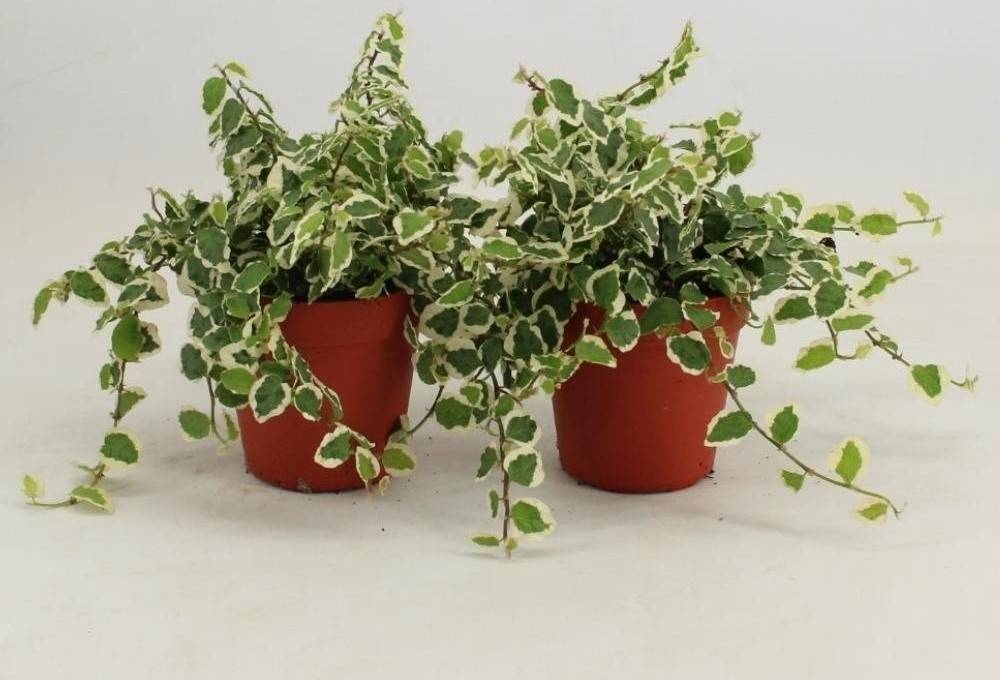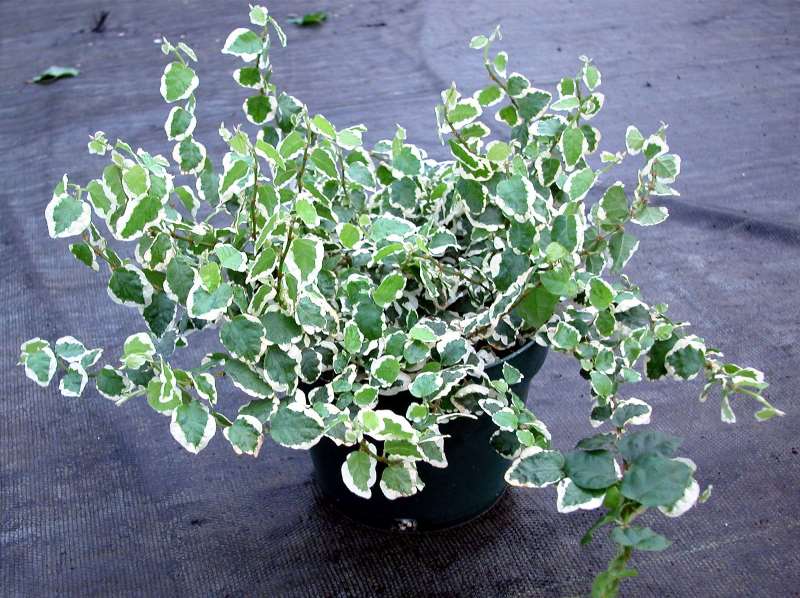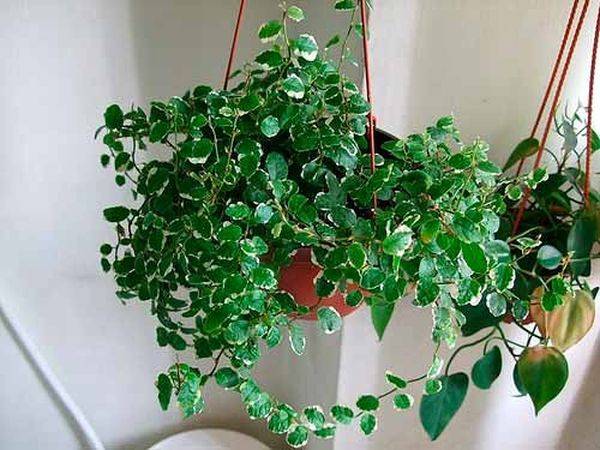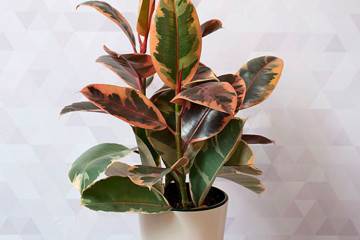Ficus Pumila flower - description and home care
Content:
Ficus Pumila in translation means "tiny" and fully justifies its name. It is a small houseplant with beautiful foliage. Due to its tiny size, it is grown mainly in hanging pots.
What the ficus Pumila looks like
Ficus Pumila belongs to the Mulberry family (Moraceae). In its natural environment, it can be found in China, Japan and Taiwan. New varieties and hybrids have been bred for indoor cultivation. They are small in size and perfectly adapted for home use.
Ficus Pumila has thin creeping branches. In the wild, they grow in trees and soil, covering large areas. The branches have small aerial roots with which the plant clings to the bark of trees.
Ficus has two types of leaves:
- young heart-shaped. The surface of the deciduous plate is dense and wrinkled up to 4 cm long and up to 2 cm wide;
- adults are larger, up to 10 cm, located at the ends of the shoots. They are more rigid, on the lower part of the leaf the veins are more pronounced. Only on shoots with mature leaves are fruits - syconia.
Fruits are round, light green in color, up to 3 cm in diameter. After ripening, they turn orange. Their food is consumed mainly in Asian countries.
Common varieties
The most popular for growing at home are the following Pumila varieties:
- White Sunny. Leaves are dark green, cream edging along the edges;
- Sunny has the same edging, only the line is dashed;
- Dorte. The leaves are deep green and covered with white spots.
Briefly about the history of appearance
Archaeologists claim that they knew about the ficus since the time of the Egyptian pharaohs, as evidenced by the found tomb from this tree. In ancient times, ficus leaves were used as a building material. From the sap of the plant, rubber was made.
Ficus Sunny: home care
Caring for Pumila Sunny ficus at home includes:
- watering;
- top dressing;
- transplant;
- compliance with the temperature regime;
- spraying and moisture;
- pruning.
Compliance with simple care rules is the key to the longevity of the plant.
Temperature
Ficus is a thermophilic plant. The ideal temperature for him is 25 ° C. In winter, it should not be lower than 10 ° C.
Lighting
A flower needs a lot of light for normal growth and development. Lighting should be diffused, otherwise, if ultraviolet rays hit the sheet, burns will appear. If there is not enough light, the bush loses its light edging at the edges of the leaves. An ideal location would be a west or east window. In winter, the plant needs additional lighting.
Watering
It is worthwhile to approach the watering procedure carefully. Excess moisture in the soil leads to rotting of the root system, and drying out of the soil leads to the death of the plant.Watering the plant is necessary as the top layer in the pot dries. During the growing season, the soil is moistened every two, or even three days. In the fall, watering is reduced to once a week. Water is poured either under the root or into a pan. It is recommended to use settled or melt water.
Spraying and moisture
The plant prefers moist air. If the room is too hot, the flower must be sprayed. It is also necessary to humidify the air in winter during the heating season. To maintain moisture, you can put a container of water near the flowerpot. It is recommended to use special devices as a humidifier. Ficus loves daily indoor air spraying.
Priming
For planting, it is better to use nutritious loose soil. But it is better to purchase a ready-made substrate for palms or mulberries.
Top dressing
The flower needs constant feeding. This is necessary for its normal growth and development.
Fertilizers are applied in spring according to the following scheme:
- 1 week - mineral fertilizers;
- 2 week - break;
- 3 week - organic fertilizers;
- 4 - break.
This scheme is repeated until the onset of winter. In winter, the flower needs peace.
Features of winter care
In winter, the plant goes to rest. The temperature is lowered to 16 ° C, the air humidity is up to 50%, watering is reduced. It is necessary to moisten the soil when the top layer of the earth dries out. You can check this with your finger.
Pruning and shaping the crown
Pruning is done once a year, but this is not strictly necessary. The procedure is needed to form the crown. This is best done in February or March. During pruning, the side shoots are shortened. Pruning those with lateral leaves. Also cut off shoots that bend inward. Pruning allows you to remove those parts of the branches that do not fit into the shape of the plant.
The procedure is carried out with a sharp knife or scissors. Before starting the process, the tool should be wiped with alcohol. Do not cut many branches at a time. It is recommended to take breaks of up to seven days. During this time, the tree will have time to rest. In an adult plant, shoots are cut to 12 cm.
Flower propagation
There are three ways to increase the flower population.
Seed propagation
The seed method is a rather laborious method. Sowing of seeds is carried out in February. This requires:
- Soak seeds for 24 hours.
- Fill the pot with soil two-thirds.
- Place seeds in small holes and sprinkle with soil.
- Cover the container with seedlings with foil.
- Ventilate and moisturize once a day.
- After the appearance of the first leaves, the bushes must be planted in separate containers.
Rooting cuttings
Cuttings are carried out at any time of the year. Shoots are cut from the ficus (up to 12 cm), it should have 2 or more leaves. The cut branch is placed in a solution of potassium permanganate for 6 hours, after which it is immersed in a container with clean water. As soon as the sprout takes root, it is planted in a pot.
Ficus can also be rooted in the ground, it is much more difficult, but at the same time the root system will be stronger. To do this, the cuttings are placed in water for a couple of hours, then in a pot with soil. After the cutting has grown up, it is transplanted into a larger container.
Air layering
To root the ficus with air layers, a small area of up to 6 cm must be cleaned on the lower branch. Apply activated carbon. Wrap the processed branch with foil. Place soil or moss inside and tie with rope. You should get a small keg. Leave a hole on top.Attach the shoot to a stick and stick it into the pot to the flower. Water the plant through the top hole. A month later, the first roots appear on the handle. Then it is cut at an angle and planted in a separate pot.
Possible growing problems and diseases
When growing ficus, growers often face the following problems:
- ficus sheds leaves;
- leaves turn pale;
- leaves turn yellow and dry;
- the lower leaves fall off.
Similar reasons are associated with improper care. The deciduous plate deforms and dries - a sign of dry air in the house. The leaves turn pale and fall off - the temperature is too high. Abundant foliage discharge is the result of a flower being in a draft and in a cold room. Leaves grow dull due to lack of minerals.
With poor maintenance, the flower can get sick:
- gray rot;
- spotted.
Also on the flower can start:
- spider mite;
- aphid.
You can get rid of pests with the help of pesticides, and fungicides for ailments.
Signs and superstitions
There are many signs and superstitions associated with ficus. The Slavs were wary of this flower, associating it with various diseases and troubles. Some believed that if the leaves of a flower begin to dry, it means that someone close to them will get sick. To keep a flower at home means to incur envy, scandals, and a showdown from scratch on yourself and your family.
In addition to negative superstitions, good omens are also associated with ficus. Some believe that the plant brings well-being to the home. If you give a tree to a young couple, then the girl will soon become pregnant, and the plant itself will protect and protect the child. In China, it is believed that ficus in the house gives comfort and an atmosphere pleasant to any person. The flower, sensitive to the slightest changes in the mood of others, absorbs negative energy, creates a positive aura. Ficus cleans the air from harmful vapors. There will be less phenol, formaldehyde, benzene and other harmful substances in the room.
Ficus Pumila is an excellent ornamental plant that is used for landscaping apartments or offices. If properly cared for, it will delight with beautiful variegated leaves for a long time.




















